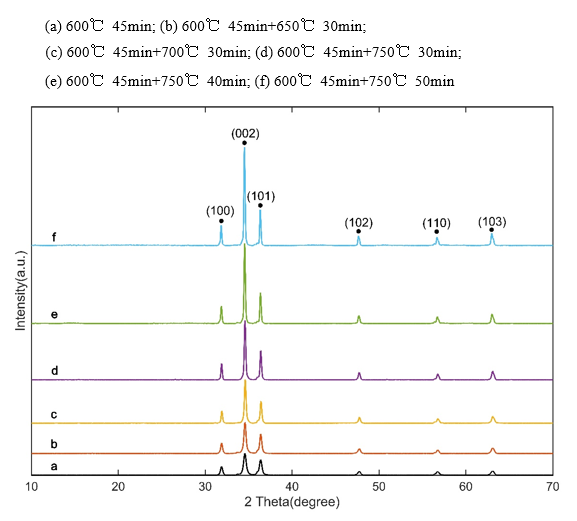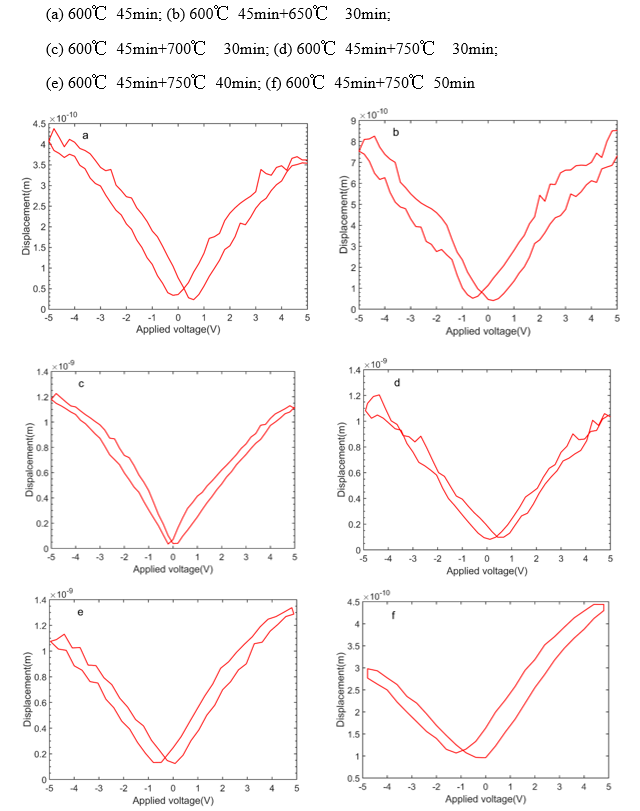In order to improve the performance of MEMS piezoelectric devices, researchers have been optimizing the preparation technology of ZnO piezoelectric film to enhance its properties. Doping is one of the important ways to improve its piezoelectric performance. The piezoelectric coefficient of V-doped ZnO thin film is one order of magnitude higher than that of undoped, and could reach 110pm/V. However, magnetron sputtering is the main method for the preparation of V-doped ZnO piezoelectric films, which has problems such as insufficient doping, nonuniform doping and difficult control of the doping concentration.
In order to solve the problem, researchers from the Institute of Acoustics of the Chinese Academy of Sciences (IACAS) prepared V-doped ZnO thin films by a modified sol-gel method. They investigated in the effects of key preparation parameters on the structure and piezoelectric properties of films, and optimized the preparation technology, which significantly improved the piezoelectric properties of the materials.
The results showed that with the increase of annealing temperature or time, the piezoelectric properties of the films first increased and then decreased, and the piezoelectric coefficient could reach 240pm/V, which was about 20 times higher than that of pure ZnO thin film. At the same time, compared with the commonly used magnetron sputtering method (the highest piezoelectric coefficient of V-doped ZnO reported at present is 170pm/V), the proposed method could make the composition distribution of ZnO: V films more uniform and doping more fully, so it could improve the piezoelectric performance of V-doped ZnO films to a greater extent.
This kind of high performance doped ZnO piezoelectric film could be applied to piezoelectric microphone based on silicon micromachining, film bulk acoustic resonator, piezoelectric micromachined ultrasonic transducer, MEMS hydrophone and other devices, which would greatly improve the performance of these devices, and promote their application in mobile communication, medical ultrasonic imaging, underwater target detection, etc.
The research, published online in the international academic journal Journal of Alloys and Compounds, was supervised by academician WANG Chenghao and supported by the National Natural Science Foundation of China (Nos.11874388, and 11474304) and the Key Research Program of the Chinese Academy of Sciences (No. QYZDY-SSW-JSC007).

Figure.1. The XRD patterns of V-doped ZnO films. (Image by IACAS)

Figure.2. Representative piezoelectric measurement curves of samples. (Image by IACAS)
Reference:
Qingqing Fan, Dongning Li, Junhong Li, Chenghao Wang. Structure and piezoelectricity properties of V-doped ZnO thin films fabricated by sol-gel method. Journal of Alloys and Compounds, 829(2020) 154483. DOI: 10.1016/j.jallcom.2020.154483
Contact:
ZHOU Wenjia
Institute of Acoustics, Chinese Academy of Sciences, 100190 Beijing, China
E-mail: media@mail.ioa.ac.cn


